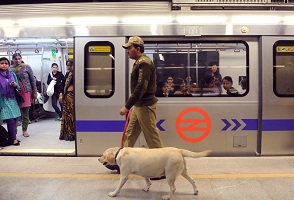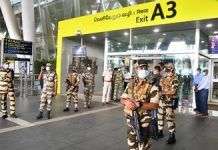A total of 160 “weak points” or chinks in the security of Delhi Metro have been identified and measures are being taken to plug them, the CISF has said. Force chief Surender Singh said CISF and Delhi Metro Rail Corporation (DMRC) have deployed ‘queue managers’ in order to keep a check at these vulnerable areas in the Delhi Metro which witnesses over 26 lakh footfalls every day. Acknowledging that there have been some “weak links” in metro security infrastructure as the partition between the paid and un-paid areas at numerous stations is “low”, the CISF chief said the force and the Intelligence Bureau (IB) have taken up the issue with DMRC.
He was commenting on the security upgrade in the rapid rail network of the national capital region, which has over 150 stations and runs across Delhi, Ghaziabad, Noida, Faridabad and Gurgaon, in the aftermath of a scary incident where a gun carrying man entered the station area and shot himself in an apparent suicide bid in 2015.
“Since that time, we have identified 160 weak points … we have zeroed in on them. Now queue managers have been deployed at these places,” he said.
These managers are private security personnel hired by DMRC to regulate commuter traffic and also help those in need. The DG said at 14 such locations, DMRC has also increased the height of the wall partitions in order to either discourage people from interacting via these areas or miscreants attempting to pass on any item inside the stations area.
Singh said the force works with a motto of “zero error” even as it has to function under a lot of pressure at these facilities where there is a huge public interaction.
Even if someone has to go the restroom, he or she deploys a replacement so that there is no queue pile up…this is the kind of stress that our personnel have. But we are doing the work efficiently,” he said. Officials said that in order to further tighten security in Delhi Metro, a “large number” of CCTV cameras have been installed and there is a plan to install more cameras at different metro stations even as its personnel have started monitoring CCTV feeds at every station and also at the two main control rooms.








